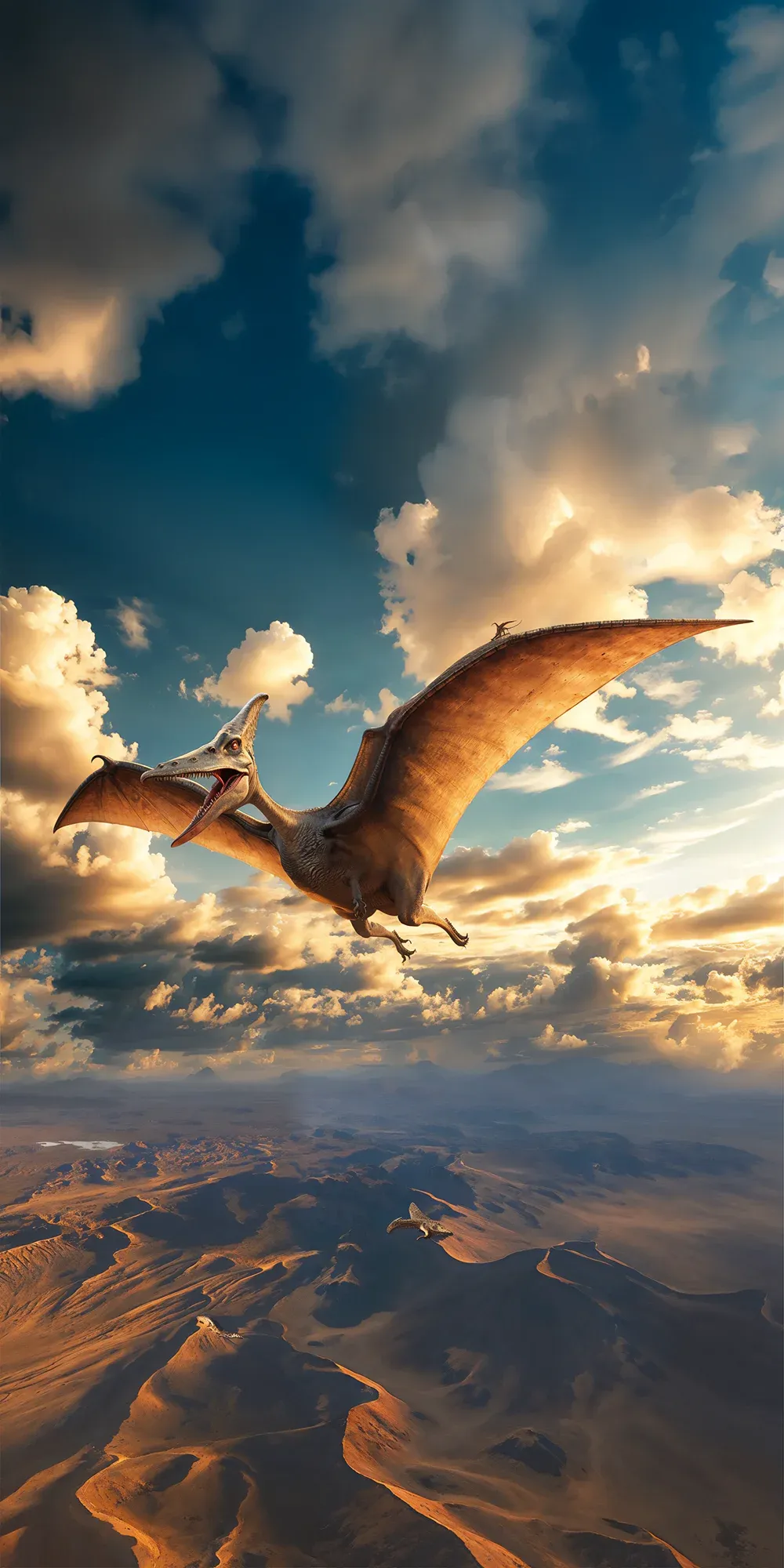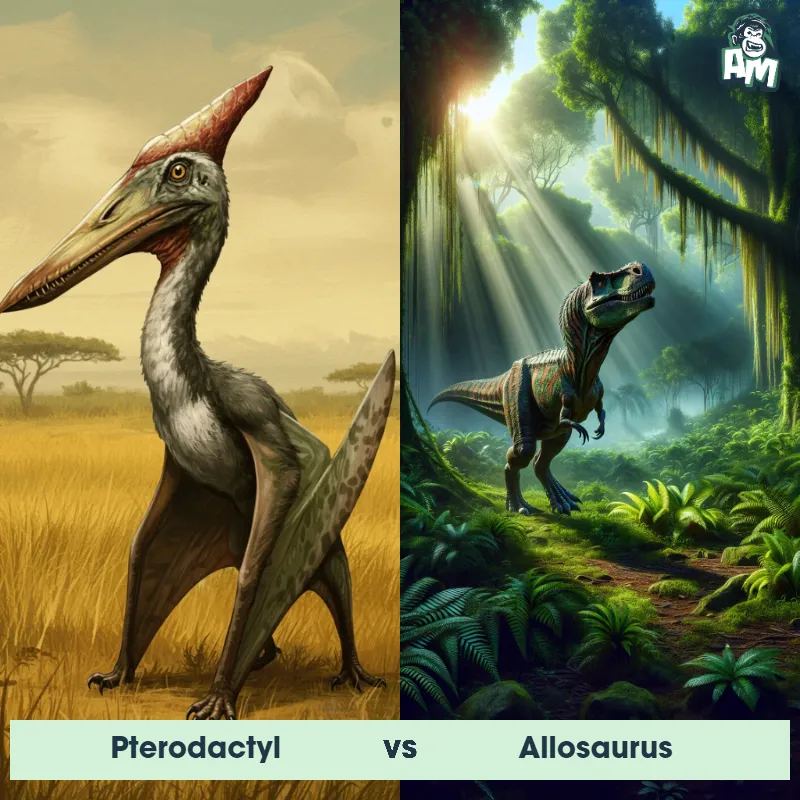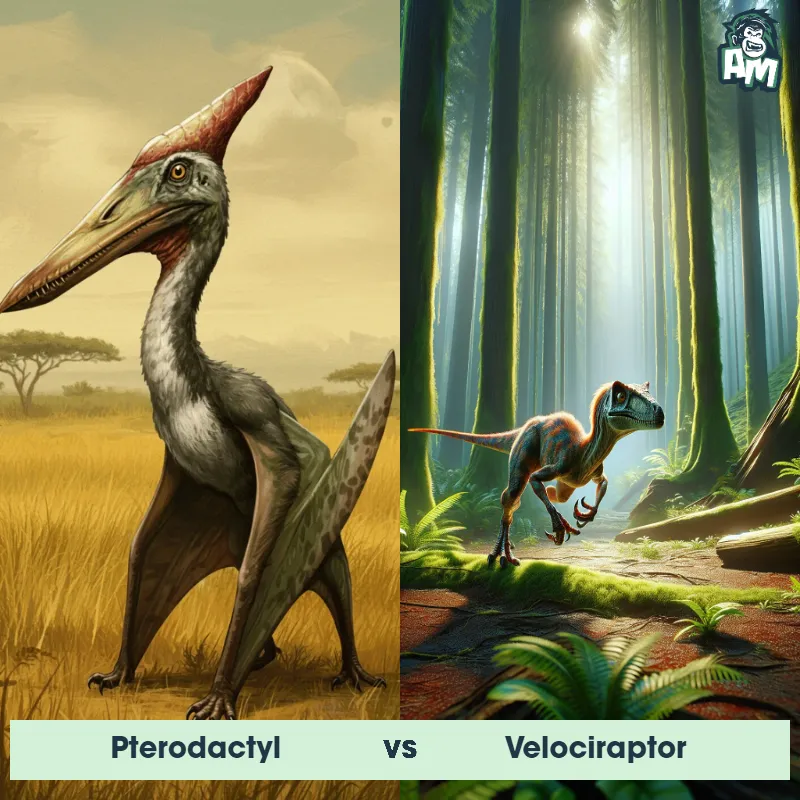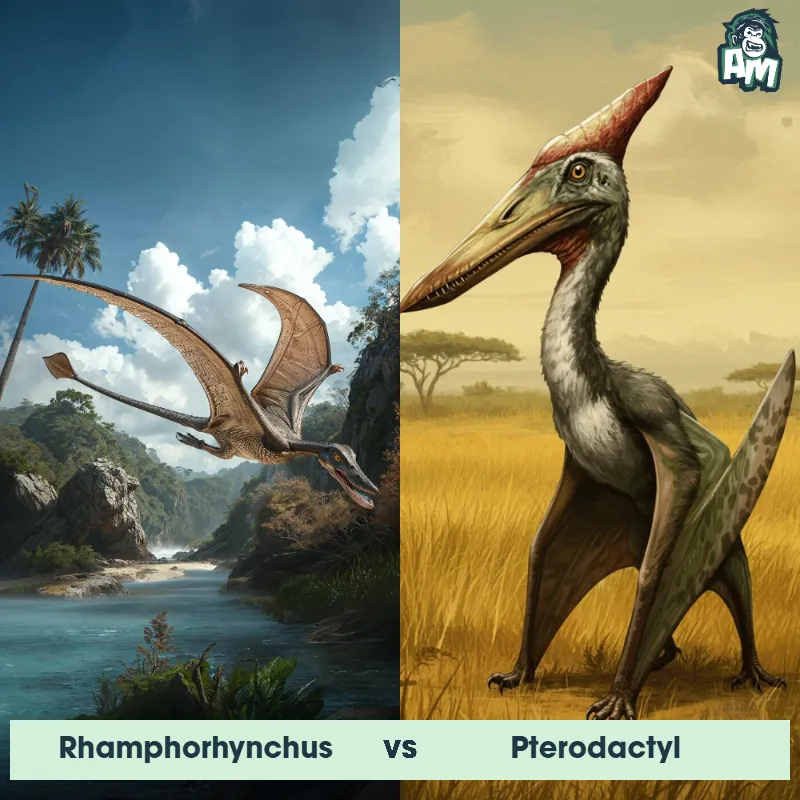The Pterodactyl
The Pterodactyl, also known as Pterosaur, was a winged reptile that lived during the Jurassic period. These creatures had long, pointed wings, a toothless beak, and a bony crest on their heads. They were able to fly due to their wings being supported by a skin membrane that stretched from their bodies to their fingers. Pterodactyls varied in size, with some as small as a crow, while others had wingspans of over 30 feet.

| Pterodactyl | |
|---|---|
| Size | 12 feet long (3.6 meters) |
| Weight | 55 pounds (25 kilograms) |
| Speed | 70mph (113km/h) |
| Key Strength | Speed and agility |
| Biggest Weakness | Vulnerable neck area |
| Scientific Name | Pterodactylus |
| Family | Pterosauria |
| Habitat | Coastal areas |
| Geography | Worldwide distribution |
| Diet | Fish |
| Lifespan | 25 years - 30 years |

The Pterodactyl
The Pterodactyl, also known as Pterosaur, was a winged reptile that lived during the Jurassic period. These creatures had long, pointed wings, a toothless beak, and a bony crest on their heads. They were able to fly due to their wings being supported by a skin membrane that stretched from their bodies to their fingers. Pterodactyls varied in size, with some as small as a crow, while others had wingspans of over 30 feet.
Fun Fact: Pterodactyls were not actually dinosaurs, but rather a type of flying reptile that existed alongside dinosaurs during the Mesozoic Era.
| Pterodactyl | |
|---|---|
| Size | 12 feet long (3.6 meters) |
| Weight | 55 pounds (25 kilograms) |
| Speed | 70mph (113km/h) |
| Key Strength | Speed and agility |
| Biggest Weakness | Vulnerable neck area |
| Scientific Name | Pterodactylus |
| Family | Pterosauria |
| Habitat | Coastal areas |
| Geography | Worldwide distribution |
| Diet | Fish |
| Lifespan | 25 years - 30 years |
Pterodactyl Matchups
We use AI to simulate matchups between the Pterodactyl and other animals. Our simulation considers size, strength, and natural predatory behaviors to determine the most likely outcome.
Pterodactyl: Diet, Predators, Aggression, and Defensive Behaviors
What did Pterodactyls eat?
Pterodactyls were carnivorous reptiles that primarily fed on fish, small mammals, and other small dinosaurs. They had sharp, pointed teeth that were well-suited for catching and tearing their prey.
Did Pterodactyls have any predators?
While Pterodactyls were apex predators during their time, they may have faced competition from other large predators such as other flying reptiles or even certain species of dinosaurs. Additionally, younger Pterodactyls may have been vulnerable to being preyed upon by larger predators.
Were Pterodactyls aggressive?
Pterodactyls were likely territorial animals and could exhibit aggressive behavior towards other Pterodactyls or potential competitors vying for food or nesting sites. However, their behavior towards other species or threats remains speculative due to limited fossil evidence.
Did Pterodactyls fight?
Pterodactyls may have engaged in fights, especially during mating season or when defending their territory. Their sharp beaks and claws could have been used as weapons during these conflicts.
How did Pterodactyls defend themselves?
Pterodactyls likely relied on their ability to fly as their primary defense mechanism. They were adept fliers and could escape potential threats by taking to the air. Additionally, their sharp beaks and claws could be used for defense when cornered.
What was the biggest weakness of Pterodactyls in a fight?
One potential weakness of Pterodactyls in a fight could have been their relatively fragile bones, which were lightweight to aid in flight but could be susceptible to injuries in combat. Additionally, their size and agility may have made them vulnerable to larger, more powerful predators if they were unable to escape through flight.
Fun Fact: Despite popular belief, not all Pterodactyls were giant creatures - some species were quite small, with wingspans similar to that of modern-day birds.
Fun Fact: Pterodactyls were highly skilled flyers, capable of soaring long distances and even performing impressive aerial acrobatics in search of food.















